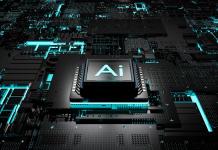Understanding Artificial Intelligence and Machine Learning: A Comprehensive Overview
Artificial intelligence (AI) is a fascinating field that continues to evolve and expand, with no one definitive definition. At its core, AI is the intelligence exhibited by machines, allowing them to solve problems and make decisions based on the information they have. One simple way to understand AI is to consider it as a combination of machine and software working together.
One common problem in AI is linear separability, where a machine is tasked with dividing a set of data points into two distinct groups by drawing a straight line through them. This concept can be applied to more complex tasks, such as differentiating between pictures of cats and dogs. By providing the machine with tools like cameras, distance measuring apps, and color analysis capabilities, it can analyze various features of the images and plot them on a graph to separate the pictures into two groups.
Decision-making in AI can range from simple tasks like separating marbles based on one parameter to complex scenarios like determining when a driverless car should apply the brakes based on the speed of a bird flying in front of it. Machines can be trained using different types of machine learning techniques, such as supervised learning, unsupervised learning, and reinforcement learning, to improve their decision-making abilities.
Artificial neural networks (ANNs) play a crucial role in AI, mimicking the way the human brain learns and processes information. ANNs consist of computing units called nodes connected together, with activation functions and weights determining how information flows through the network. Transformers, a specialized type of ANN, have revolutionized the field by improving the attention and performance of machines in tasks like language translation.
GPUs, or graphical processing units, are physical processors that power ANNs and are essential for running complex AI models. Companies like Nvidia have become leaders in the AI industry by producing high-performance GPUs that are widely used for AI applications. However, as AI technology continues to advance, there is growing interest in developing alternative hardware and software solutions to reduce dependency on specific GPU technology.
Overall, AI is a dynamic and rapidly evolving field that holds immense potential for transforming various industries and improving decision-making processes. With ongoing advancements in technology and research, the possibilities for AI are endless.


















